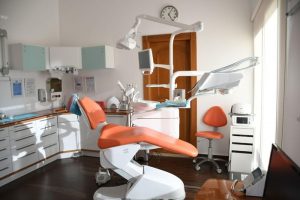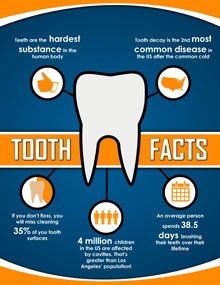
If you have sensitive teeth, you know that finding the right toothbrush can be just as important as finding the right dentist in Calabasas. But what kind of toothbrush is best for people with sharp teeth? The answer depends on your preferences, budget, and lifestyle. Here’s what we recommend:
The right toothbrush can make a big difference!
The right toothbrush can make a big difference in your oral health. A soft or medium-soft bristled brush can help you brush for the recommended 2 minutes, and a smaller head makes it easier to get to all areas of your mouth. A smaller head also allows you to spend more time in each quadrant of your mouth, which is important when it comes to brushing for 30 seconds on each side.
There are many different types of toothbrushes. Some will get the job done, but others can actually help to improve your oral health. Which type you choose depends on your personal preferences, but one thing’s for sure: it’s important that you brush twice a day for two minutes (or longer) with fluoride toothpaste to remove plaque build-up from your teeth and protect them from damage.
The right toothbrush is only part of your routine.
A good toothbrush is only one part of a good oral care routine. Brushing and flossing are the most important parts, and we recommend that you brush twice a day for two minutes on each side of your teeth. If you’ve been neglecting them, it’s never too late to start fresh!
You might be thinking: “But what about my toothpaste?!” We have some recommendations there too! As far as toothpaste goes, they’re all pretty similar (just like most bar soaps). In general, we recommend choosing one that has fluoride in it—this ingredient protects against cavities by hardening up your enamel over time. You should also look for special ingredients like xylitol or sodium bicarbonate (baking soda) which may help prevent bad breath or gum disease respectively.
To recap: the best toothbrush is only part of a good routine—but it’s an important part! For tips on creating an effective oral care regimen from head to toe follow these steps:
Electronic toothbrushes are the best for people with sensitive teeth and gums.
If you have sensitive teeth and gums, an electronic toothbrush is the best choice for you. The soft bristles of this type of brush are gentler on your enamel and gums, while the oscillating motion helps remove plaque more efficiently than manual brushing. Additionally, electronic toothbrushes often have a built-in timer that will alert you when to switch sides of your mouth or start brushing again after two minutes (the recommended time limit for proper plaque removal).
The quad pacer feature on many electric brushes ensures that you spend equal time cleaning each quadrant of your mouth—another way to help ensure proper dental hygiene.
Avoid hard or stiff bristles.
Avoid hard or stiff bristles. There are several types of toothbrush bristles: soft, medium, and hard. While all three will work to clean your teeth just fine, they have different benefits. Harder bristles can be helpful if you have a lot of plaque buildup and food stuck in your teeth. They can help break through that buildup and get everything out without damaging your gums or enamel.
However, if you already have sensitive teeth and having a harder bristle brush against them hurts too much for comfort (or causes pain at all), it may be better for you to go with a softer bristled brush instead. The same goes for those who do not yet have any sensitivity issues but want to avoid having them in the future—they should opt for something on the softer side as well.
Of course, electric toothbrushes make it easy to find just what’s right for you since many come with adjustable settings so users can choose how much pressure their brush exerts on their gums each time they brush!
Choose an electric toothbrush with soft bristles.
If you’re looking for a more advanced electric toothbrush that will help you to brush better, look for one with soft bristles.
Electric toothbrushes with quad-pacer: This feature has been proven to improve brushing habits and prevent plaque build-up. It does this by alerting us to when it’s time to switch from cleaning the top teeth to the bottom ones, so we can be sure we’re getting all areas of our mouth covered.
Electric toothbrushes with 3D cleaning action: This refers to how quickly and thoroughly your electric toothbrush cleans your mouth while easing any discomfort caused by its movements. A good way to think about it is like an oscillating fan—the faster something moves back and forth or up and down, the more room there is for error if it doesn’t do what you want it to do exactly right every time (even if those errors might not seem significant). The same goes for an appliance moving around in your mouth—the faster the movement, especially in multiple directions at once (like left-to-right or up and down), the greater chance there’ll be some missed spots if its actions aren’t precise enough each time around!
Consider an electric toothbrush with a quad-pacer.
If you want to make the most of your electric toothbrush, look for one with a quad-pacer feature. This will help you brush for the right amount of time and ensure that you are brushing in all the right places. It can also be helpful if you’re new to this whole dental hygiene thing.
The quad-pacer will beep every 30 seconds, reminding you to move on to a different section of your mouth. If you want to make the most of your electric toothbrush, look for one with a quad-pacer feature. This will help you brush for the right amount of time and ensure that you are brushing in all the right places.
Finding the right toothbrush for sensitive teeth can be challenging, but we hope that this article has helped you make an informed decision. If you have any questions, please reach out to us for the best dentist in Calabasas!

 Welcome Video
Welcome Video Our Testimonials
Our Testimonials
 Tooth Facts
Tooth Facts